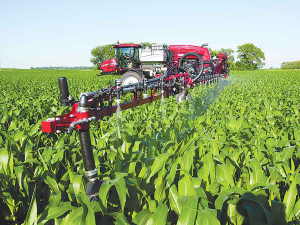Pesticides and Parkinson's
OPINION: Beneath the routine of spraying crops lies a growing concern that has remained largely under the radar: the link between pesticide and herbicide exposure and Parkinson’s disease.
 Studies from all around the world have shown that certain pesticides and herbicides—specifically paraquat, heptachlor, and rotenone—are associated with increased risk of Parkinson’s.
Studies from all around the world have shown that certain pesticides and herbicides—specifically paraquat, heptachlor, and rotenone—are associated with increased risk of Parkinson’s.
Beneath the routine of spraying crops lies a growing concern that has remained largely under the radar: the link between pesticide and herbicide exposure and Parkinson’s disease.
Parkinson’s disease is a progressive neurological disorder that, over time, robs sufferers of many of their faculties and quality of life. It is the second most common neurodegenerative disease after Alzheimer’s, but it is the world’s fastest growing. Disturbingly, rates of Parkinson’s are rising particularly quickly in rural farming communities.
Our increasingly ageing population is a factor, but this does not alone explain the rapid growth in incidence, especially given that fact that 20% of people living with Parkinson’s experience symptoms before age 50. Genes play a role too, with approximately 15% of individuals with Parkinson’s having a family history, but a lifetime of exposure to environmental factors, including herbicides and pesticides, industrial chemicals, and air pollution, is the key driver of disease. Indeed, a growing body of scientific evidence points to a strong connection between exposure to certain agricultural chemicals and the onset of Parkinson’s. This is supported by population-level studies (called ‘epidemiology’) showing a clear geographical relationship between the use of these chemicals and Parkinson’s incidence, as well as animal studies showing that exposure to these chemicals induces Parkinson’s like symptoms.
Studies from all around the world have shown that certain pesticides and herbicides—specifically paraquat, heptachlor, and rotenone—are associated with increased risk of Parkinson’s. Paraquat, for instance, has been found to increase the risk by as much as 200–600% depending on the level and duration of exposure, and it is now banned in many countries (it is restricted in NZ, and many paraquat- containing products have been banned, but not all).
What these chemicals, as well as air pollution and solvents like trichloroethylene (which is used in mining and dry cleaning) have in common is that they are thought to damage mitochondria—the energy-producing parts of cells. The exposure doesn’t have to be massive or dramatic; the disease is likely the result of chronic low-dose exposures over decades combined with genetic risk/predisposition and exposure to other potential triggers (such as infections and head knocks).
It’s heartbreaking that many people were never informed about the neurological risks of the products they regularly used. Labels might contain safety instructions, but they don’t always spell out the long-term consequences. And for many older-generation farmers, protective equipment was rarely used or even available.
Daniel McGowan is the chief executive of Cure Parkinson’s NZ.
Federated Farmers says almost 2000 farmers have signed a petition launched this month to urge the Government to step in and provide certainty while the badly broken resource consent system is fixed.
Zespri’s counter-seasonal Zespri Global Supply (ZGS) programme is underway with approximately 33 million trays, or 118,800 tonnes, expected this year from orchards throughout France, Italy, Greece, Korea, and Japan.
Animal owners can help protect life-saving antibiotics from resistant bacteria by keeping their animals healthy, says the New Zealand Veterinary Association.
According to analysis by the Meat Industry Association (MIA), New Zealand red meat exports reached $827 million in October, a 27% increase on the same period last year.
The black and white coat of Holstein- Friesian cows is globally recognised as a symbol of dairy farming and a defining trait of domestic cattle. But until recently, scientists didn’t know which genes were responsible for the Holstein’s spots.
According to the New Zealand Dairy Statistics 2024/25 report, New Zealand dairy farmers are achieving more with fewer cows.